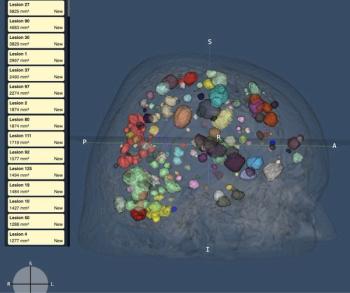
Diagnostic Imaging's Weekly Scan: Nov. 21, 2020
Rapid COVID-19 Diagnosis with CT and CO-RADS; Cooled Radiofrequency Ablation for Pain Relief; Inappropriate Abdominal CT and Ultrasound Scans; and Lead Shielding Guidance
Welcome to Diagnostic Imaging’s Weekly Scan. I’m senior editor, Whitney Palmer.
Before we get to our featured interview with Dr. Cynthia McCullough about recommendations for the use of lead shielding during imaging in light of last week’s research on the impact diagnostic scans can have on the risk of testicular cancer, here are the top stories of the week.
With now more than 250,000 COVID-19 deaths and a multitude of states hitting daily highs for newly diagnosed cases, providers are going to need a better way to diagnose patients who are suspected of being infected with the virus. According to a study published in
Despite being over a week away, news is already being released from this year’s RSNA annual meeting. Researchers from the Emory University School of Medicine published their
For more coverage based on industry expert insights and research, subscribe to the Diagnostic Imaging e-Newsletter
Even though a good number of patients are descending upon the emergency department these days with worries about COVID-19, there are still a huge number of patients that present every year with complaints of abdominal pain. CT scans and ultrasounds are the first-line imaging studies ordered to diagnose what’s behind these problems, but a new study published in
And, finally, this week, Diagnostic Imaging spoke with Dr. Cynthia McCullough, chair of the board of the American Association of Physicists in Medicine about the guidance around using lead shielding in diagnostic imaging. Recently, the recommendations on shielding have shifted away from using this protective measure because it can distort the image without providing any benefit. In light of research published last week on how diagnostic imaging scans can potentially increase a man’s risk of testicular cancer by 60 percent, McCullough offered some perspective not only on the official guidance but on how radiologists and radiologic technologists should proceed in daily practice. Here’s what she had to say.
Newsletter
Stay at the forefront of radiology with the Diagnostic Imaging newsletter, delivering the latest news, clinical insights, and imaging advancements for today’s radiologists.




